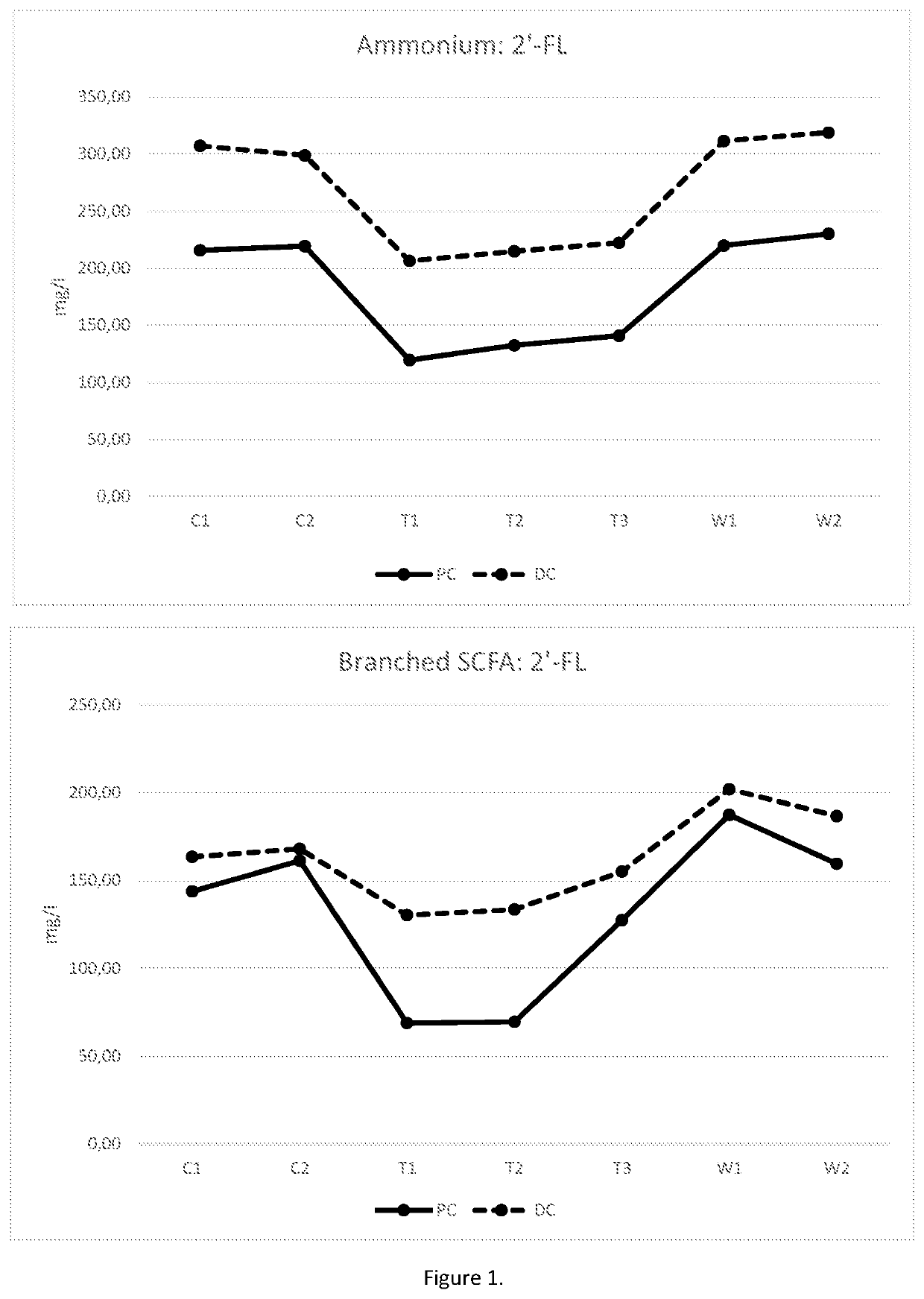Synthetic composition comprising one or more human milk oligosaccharides (HMOS)
- Summary
- Abstract
- Description
- Claims
- Application Information
AI Technical Summary
Benefits of technology
Problems solved by technology
Method used
Image
Examples
example 1
[0112]A total of 100 male and female healthy adults are recruited to participate in the study. After a screening visit and run-in period of 1-2 weeks, the participants are selected and randomized into ten groups, each of 10 subjects. One group is administered a placebo product containing 2 grams of glucose. The remaining 9 groups are administered treatment product containing a) 20 g of 2′-FL, b) 10 g of 2′-FL, c) 5 g of 2′-FL, d) 20 g of LNnT, e) 10 g of LNnT, f) 5 g of LNnT, g) 20 g of a 2:1 mixture of 2′-FL and LNnT, h) 10 g of a 2:1 mixture of 2′-FL and LNnT, and i) 5 g of a 2:1 mixture of 2′-FL and LNnT for 4 weeks. The placebo and treatment products are in powder form in a unit dosage container.
[0113]The healthy adults are eligible to participate if they are at an age between 18-60 years. All recruited participants are able and willing to understand and comply with the study procedures. Participants are excluded if: they had participated in a clinical study one month prior to s...
example 2
[0128]The impact of the HMOs on microbiota and bacterial metabolites was investigated in the M-SHIME® (M-TripleSHlME®) in vitro gastrointestinal model (Prodigest). The typical reactor setup of the M-TripleSHIME® consisted of a succession of four reactors simulating the different parts of the human gastrointestinal tract. The first two reactors were of the fill-and-draw principle to simulate different steps in food uptake and digestion, with peristaltic pumps adding a defined amount of SHIME feed (140 mL 3× / day) and pancreatic and bile liquid (60 ml 3× / day), respectively, to the stomach and small intestine compartment and emptying the respective reactors after specified intervals. The last two compartments were continuously stirred reactors with constant volume and pH control. The retention time and pH of the different vessels were chosen to resemble in vivo conditions in the different parts of the colon. The proximal colon was set to pH 5.4-5.6 and retention time=12 h, and the dista...
PUM
 Login to View More
Login to View More Abstract
Description
Claims
Application Information
 Login to View More
Login to View More - R&D
- Intellectual Property
- Life Sciences
- Materials
- Tech Scout
- Unparalleled Data Quality
- Higher Quality Content
- 60% Fewer Hallucinations
Browse by: Latest US Patents, China's latest patents, Technical Efficacy Thesaurus, Application Domain, Technology Topic, Popular Technical Reports.
© 2025 PatSnap. All rights reserved.Legal|Privacy policy|Modern Slavery Act Transparency Statement|Sitemap|About US| Contact US: help@patsnap.com

